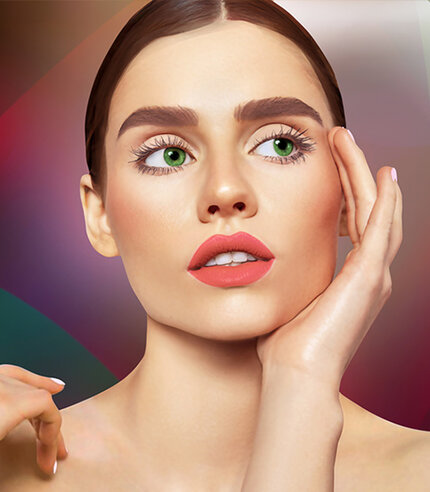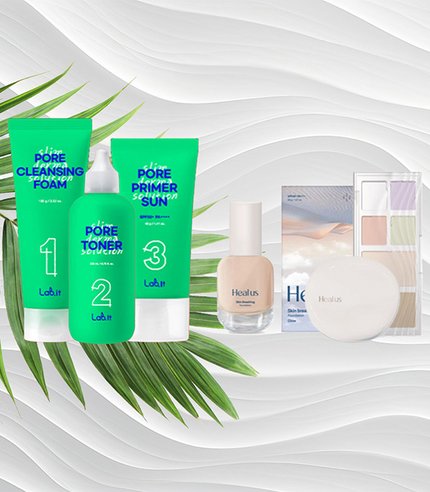Why is it that some people’s skin is deeply furrowed at 50 and others show almost no signs of age? Why do some people develop skin cancer whilst others, despite lots of sunbathing, enjoy beautiful, healthy skin into old age? The Mibelle Group and ETH Zurich are trying to track down the answers to these questions.
Why do people age at different rates and why do some develop cancer?
Numerous scientists around the globe, in addition to ETH Zurich and the Mibelle Group, are investigating these questions. Knowledge about the complex relationships in the human body’s cells is increasing rapidly and delivering more and more findings about the interactions between environment and skin, the biggest human organ.
The sun’s UV radiation is proven to have the greatest environmental impact. UV radiation is generally harmful to human cells, apart from the fact that it helps the body to form vitamin D. Even low doses of UV radiation can damage skin cells’ genetic material, long before sunburn appears. Generally the cells’ repair systems alleviate the damage to genetic material, but they become overtaxed by frequent, intensive UV radiation. It is then impossible to fully repair the damage caused, or to repair it perfectly, which leads to changes in the genetic material (mutations), so the risk of skin cancer increases. UV radiation damage can also cause the cells to die off, leading to premature skin ageing.
In this joint research project ETH and the Mibelle Group want to get to the bottom of the damage and repair mechanisms. The intention is to clarify exactly what happens in the skin after it is penetrated by the UV rays – this will provide the answers to the questions about why people age differently and why some develop cancer. The researchers want to find out more about how the cells and their DNA changes as a result of penetration by UV rays. At the same time they are working on a method to measure and analyse cell damage.
On the trail of cell damage
The collaboration which has developed as a result of a research initiative by Mibelle Group parent company Migros and ETH is proving to be extremely exciting. ETH and the Mibelle Group have long been looking at the issue of cell damage and together they are getting nearer to solving this. ETH is one of the world’s leading universities, with internationally renowned research work. As an innovative manufacturer of cosmetic products for Europe and Asia, the Mibelle Group has decades of experience in the field of cosmetics – the perfect complement to ETH.
The team has already made considerable progress just 9 months after the project start. The team has established a method to detect changes in human DNA specific to UV damage. Using this method, they compared cells exposed to UV rays with others that were untreated. They observed a significant increase in this specific mutation in the cells treated with UVA.
Other studies are investigating the molecular mechanisms which are set in motion in the case of UV-damaged human skin cells. This information will contribute to a better understanding of the extent to which sunlight contributes to premature ageing and skin cancer.
High-quality skincare products for youthful, healthy skin
The knowledge gained from this research project will place the Mibelle Group in a better position in future to develop cosmetics that provide the skin with optimum protection from the sun’s UV rays and so prevent skin cancer and ageing processes caused by the environment.
Currently the best protection against damaging environmental influences is a high-quality day cream that not only contains effective, high-factor protection, but also strengthens skin’s own defences with high-quality antioxidants and nourishing ingredients.
Professor Sturla is the person from ETH Zurich responsible for this research project; we asked her a couple of questions:
What is the focal point of your department’s research?
Our group investigates the extent to which our cells’ molecules are damaged by environmental influences, such as UV radiation. We mainly focus on damage to our DNA. If we have a better understanding of DNA damage’s contribution to diseases, we can drive forward the research to develop better protection and, at the same time, minimise the need for animal testing.
What do you hope will be the contribution from collaboration with the Mibelle Group?
Collaboration with the Mibelle Group offers a splendid opportunity to exchange ideas between our team of academic scientists and industry experts. Both sides contribute unique skills which are critical for making progress with our project of understanding the extent to which UV light contributes to the ageing process and cancer formation.
What is ETH’s aim?
The aim of ETH’s research is to address important social challenges. This project is supported by the World Food System Center, founded at ETH in 2011. The WFSC combines research from several disciplines, in partnership with representatives from key interest groups, such as the Mibelle Group, to generate new knowledge that will have a significant influence on our society.
Why is it important to have a better understanding of cell processes?
Cells represent a superb model system for investigating signalling pathways that have got out of control in human diseases. This is why we use human cells in our project. By exposing these cells to UV light, we can monitor changes at cellular level in order to understand the complex processes which are disrupted and contribute to skin cancer and ageing.
What is your personal goal where this collaboration is concerned?
Ultimately, our collaboration aims to develop experimental tools and new knowledge in order to better understand the causes of skin cancer and the complex ageing process. This collaboration has allowed us to conduct new and exciting research, in order to study the harmful effect on human cells of UV radiation. This will have a positive influence on our society, as it will allow us to better assess the safety and effectiveness of body care products with regard to their UV protection.



![[Translate to Französisch:] [Translate to Französisch:]](/fileadmin/_processed_/2/e/csm_peptide_teaser_77d59d2798.jpg)



